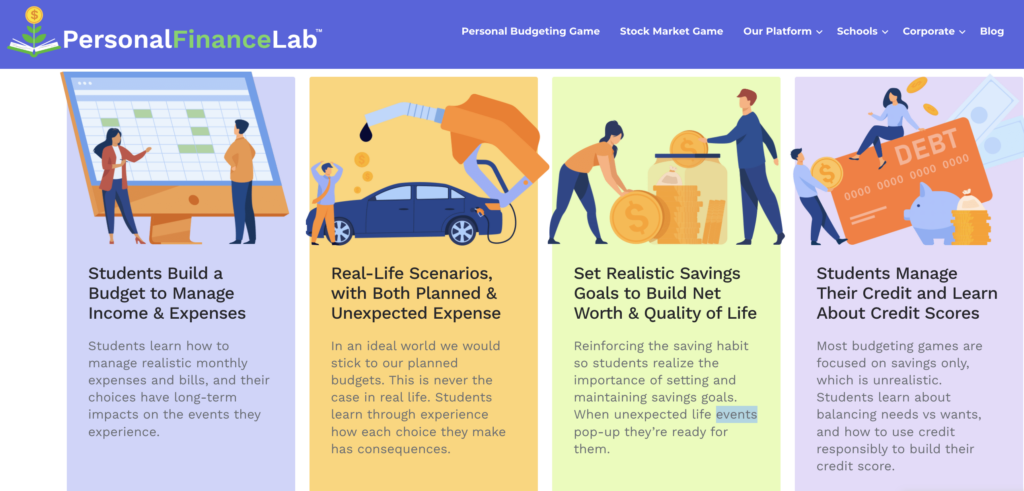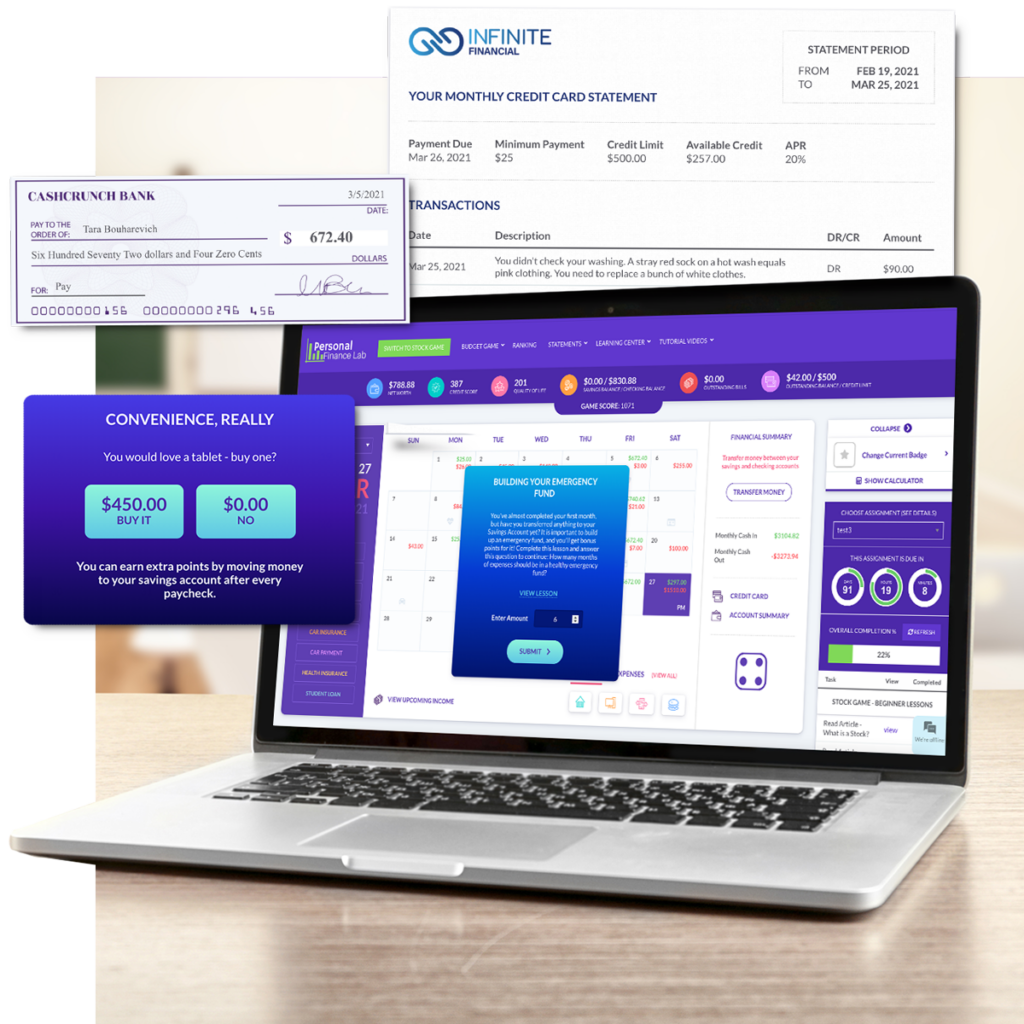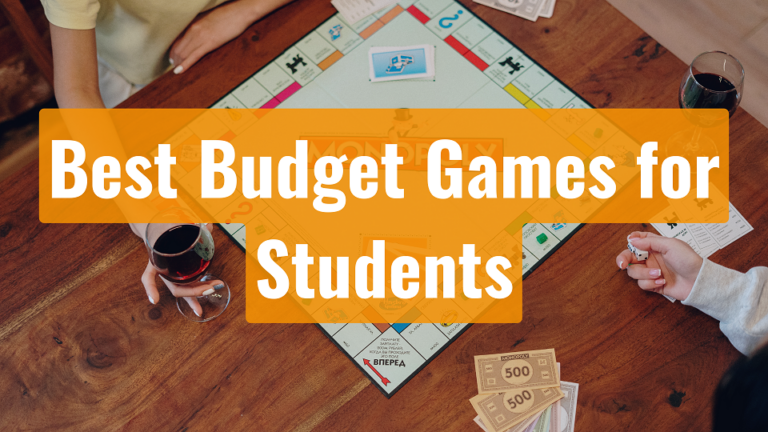We learn a lot of stuff in school. Math. Science. History. Why it’s a bad idea to throw parties at your house when your parents are out of town.
But there’s one subject that’s as important and many times absent from curricula: Personal finance.
Let’s face it, everything’s getting more expensive and wage growth just isn’t keeping up. Most of us are having to do more with less, and we can’t all win the lottery or marry a wealthy widow.
Keeping a proper budget has never been more important, and the lack of formal personal finance and budgeting classes means the burden of teaching students how to manage their money has fallen on individual parents, teachers, and professors.
The bad news is that keeping students engaged and learning is harder than ever in the age of TikTok and nanosecond attention spans, and that goes double for dry subjects like personal finance and budgeting.
The good news is that there are some very, very smart people out there who understand the importance of budgeting, how difficult it is to get students to care, and the best methods for getting students to engage with and learn about personal finance.
What is the best method, you ask? One word: Gamification.
Here are some of the best personal finance and budgeting games for kids, high schoolers, and college students.
The Best Budget Games for Students
Okay, we all know there’s practically no chance you’re going to get elementary school-aged kids to sit down and put together a budget no matter how much candy or colorful flashing lights you throw at them. But middle school kids? Middle school kids can be tricked.
Enter the bean game. Available for the best price ever—free—all you need for this game is a few kids, a printer, and a couple handfuls of jellybeans.
The game is simple. Each kid receives a salary of 20 jellybeans, a game board, and a reminder that eating their beans will make them poor.
Each board contains a set of spending categories like housing, food, transportation, insurance, and recreation.
The kids will have to divide their beans between the categories, some of which will have to go to necessities like housing and food. The rest can be divvied up (or eaten) as the kids choose.
It’s a simple game, but it does have all the ingredients you need to start a conversation about finite resources, wants versus needs, and, hopefully, about how the money they spend on iPhone games is money their parents could have otherwise spent on college.
No Beans for Teens: PersonalFinanceLab, the Best Budget Game for High School Students
High school can be tough, but it’s important that high schoolers know that real life will be exponentially tougher…if they don’t know how to properly manage their money, that is.
Thankfully there’s a budgeting game that’s tailor-made for teachers and students alike: PersonalFinanceLab.
PersonalFinanceLab gives you everything you need to teach kids about banking, budgeting, credit, debt, emergency funds, saving and investing. That is basically all thing things we grownups have to deal with every week: managing a household budget.
It even comes with lessons aligned to state by state standards.
Its streamlined interface lets you get up and running in minutes, and its deep mechanics and fully customizable parameters let you create personalized scenarios for students in all income levels and career tracks.

Want to motivate students by showing them how hard it would be to get by with the money they’d make working at McDonald’s? PersonalFinanceLab has you covered.
Want to show your students why it’s a bad idea to carry a balance on their credit card without lecturing them? PersonalFinanceLab lets you adjust interest rates, simulates balance increases, and includes embedded lessons that break down the concepts in an approachable way.
Rent. Income tax. Part time versus full-time work. PersonalFinanceLab lets you customize all of it to fit the cost of living and prevailing wages in your community.
And best of all? PersonalFinanceLab is only $10 per student.
You can even use coupon code SAVE20 to save 20% if you order it yourself on the PersonalFinanceLab Order page.. That won’t be a stretch for even the tightest school budgets.
Stock-Trak: The Best Budgeting Game for College Students
Their brains may not be fully developed, but college students are (usually) mature enough to wrap their heads around the complexities of managing their finances in the real world…and yet surprisingly few of them receive the instruction they need to do just that.
In an ideal world there would be a program that could walk college students through budgeting and investing in and out of the classroom. A program that professors could customize to fit their students’ specific needs, and that would supplement the built-in lessons with integrated quizzes and gamified scenarios.
It’s too bad no such program exists. Oh wait a second.
Stock-Trak is a software platform that does all of the above and more.

Not only does Stock-Trak bring over 30 years of expertise to the table, it comes jam-packed with an ever-growing list of lessons, interactive scenarios, and an innovative gamification system that can keep even chronic sufferers of senioritis engaged with the material.
Stock-Trak is more than just an educational program, it’s a whole ecosystem of customizable curriculum and powerful tools that make delivering important information and keeping track of your students’ progress so easy you’ll almost forget you’re working at all.
And here’s the best part: Over 1,000 universities already use Stock-Trak to teach their students about budgeting and investing.
Stock-Trak helps over 1,000,000 students learn how to manage their money every year, so you know you’ll be spending your budget wisely if you sign up. Stock-Trak even offers demos, too, so you don’t have to spend a dime unless you think it can help prepare your students for the real world.
BudgetChallenge.com
PersonalFinaceLab and Stock-Trak try to make budgeting and personal finance seem interesting and engaging. BudgetChallenge.com, while retaining much of the same essential functions, doesn’t have the same quality of user experience and gamification.
BudgetChallenge comes with the benefit of being free to qualified schools. It comes in the form of 10-week modules that give students hands-on experience with budgeting via in-depth simulations (IE lots of spreadsheets) that cover things like cash flow budgeting, emergency funds, and credit management.
BudgetChallenge is perfect for teachers who like a more traditional approach to education. The front page of its website contains such charmingly off-putting remarks like “Aren’t you tired of reading about how young adults are making a mess of their financial lives?” and pictures of trophies – a halfhearted attempt at gamification.
Conclusion
Budgeting is a crucial skill that most students don’t learn until it’s too late, but you can change that.
The services listed here are the best of the best; they’re intuitive, customizable, and reasonably priced, and even the most tight-fisted admins will have to acknowledge the amount of bang you’ll get for your school’s buck.
It doesn’t take much to change a student’s financial trajectory, and you’re just the person they need to make that happen.
Are you from the State of Arkansas? If so, check out the Financial Literacy Graduation Requirements for Arkansas and how they align with the games and lessons on PersonalFinanceLab. You can see all the personal finance state standards from here.
